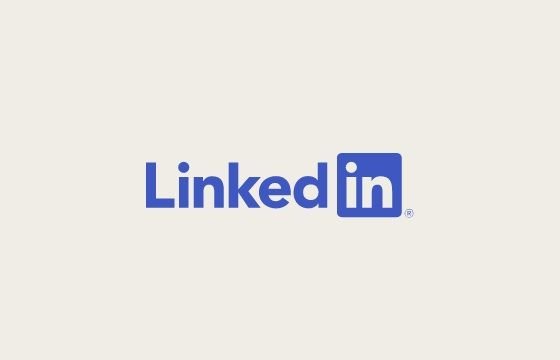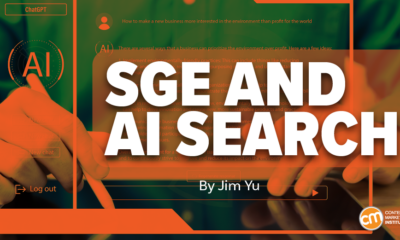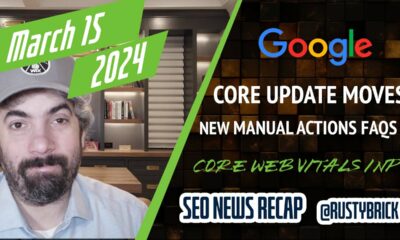SOCIAL
LinkedIn Updates Feed Algorithm to Downrank Engagement-Baiting Posts and Polls

User activity on LinkedIn continues to rise, with the platform reporting ‘record levels’ of engagement growth for six quarters in a row and counting, and as broader economy continues its resurgence, in the wake of the pandemic, you can expect LinkedIn interactions to continue their upwards trajectory.
But as always, where there’s more opportunity for attention, there will also be ‘growth hackers’ and those looking for ways to game platform algorithms to maximize their content performance.
Which makes sense – these days, most social media managers have engagement targets built into their KPIs, and more exposure can only help in providing more potential for brand attention, leading, ideally, to more valuable connections and business. But eventually, when everybody’s doing the same thing, it can get to be a bit much – which is why LinkedIn is now moving to update its algorithms to crack down on certain posts and post types that users have had enough of.
So what’s on the outs in LinkedIn’s view?
First off, LinkedIn says that people don’t like engagement baiting posts:
“We’ve seen a number of posts that expressly ask or encourage the community to engage with content via likes or reactions – posted with the exclusive intent of boosting reach on the platform. We’ve heard this type of content can be misleading and frustrating for some of you. We won’t be promoting this type of content and we encourage everyone in the community to focus on delivering reliable, credible and authentic content.”
Some of these are the same types of posts that Facebook dealt with when it first introduced Reactions, with people using Reactions essentially as a polling device, asking users to allocate a certain Reaction emoji to signify their response.
Which can definitely juice your engagement, but LinkedIn is not happy about it, and if you are going to try this approach, know that you may get penalized for such from now on.
Also, too many polls:
“We’ve heard feedback that there are too many polls in the feed. We’re taking steps to be smarter and show you only those that are helpful and relevant. That means fewer polls from people you don’t know and more from those you’re more likely to engage with from your network.”
Polls are also a bit of cheat code to LinkedIn engagement, with the simplicity of engaging making it a tempting lure to get more engagement.
But again, now the marketers have overdone it, and LinkedIn users have had enough of polls for the time being. That’s not to say you shouldn’t use them, but just be wary that they won’t reach as far any more, and they may not be as beneficial as they have been.
On another front, more users are now able to opt out of political content in the app:
“We heard from some of you that you don’t want to see political content. To fix this, we’re testing a way to give you the option to reduce political content in your feed. While we’re only testing currently in the US, based on feedback we receive, we may further develop the feature and expand it to more regions and languages.”
LinkedIn actually started testing this back in February, and is now expanding that test to more users, ahead of, potentially, a broader launch.
It’s an interesting experiment – and really, for the most part, political posts probably don’t fit on LinkedIn anyway. But then again, many people do work in political and advocacy roles which could, theoretically, also be caught up in this, which may impact platform reach and performance for some users and brands.
That’s a key note, and something for related businesses to keep an eye on – because if enough people do indeed choose to switch off political posts, the impact could be significant.
Finally, LinkedIn is also working to reduce its notifications, so you won’t see as many updates from your network.
“For example, you may not get a lot of value from seeing a connection’s comment on someone else’s post about a job change if you don’t know that other person. That’s why we’ll be showing you more targeted activity from your network, and where you’ll be more likely to join the conversation, too.”
It’ll be interesting to see how good LinkedIn’s algorithm can be at understanding your interests, and alerting you to the most relevant updates based on these parameters.
As always, if you’re seeing content in your LinkedIn Feed that isn’t relevant or interesting to you, you can help to improve your experience by tapping on the three dots menu on any post and selecting “I don’t want to see this”. LinkedIn also recently updated this option, so that you can now indicate that you don’t want to see as much content from a certain creator/author, or a topic.
These will no doubt be welcome changes for many LinkedIn users. I mean, the polls were getting pretty crazy, and engagement baiting on any platform is always a bit needy.
You’ll likely notice a change in your LinkedIn feed over the next few weeks.
SOCIAL
Snapchat Explores New Messaging Retention Feature: A Game-Changer or Risky Move?

In a recent announcement, Snapchat revealed a groundbreaking update that challenges its traditional design ethos. The platform is experimenting with an option that allows users to defy the 24-hour auto-delete rule, a feature synonymous with Snapchat’s ephemeral messaging model.
The proposed change aims to introduce a “Never delete” option in messaging retention settings, aligning Snapchat more closely with conventional messaging apps. While this move may blur Snapchat’s distinctive selling point, Snap appears convinced of its necessity.
According to Snap, the decision stems from user feedback and a commitment to innovation based on user needs. The company aims to provide greater flexibility and control over conversations, catering to the preferences of its community.
Currently undergoing trials in select markets, the new feature empowers users to adjust retention settings on a conversation-by-conversation basis. Flexibility remains paramount, with participants able to modify settings within chats and receive in-chat notifications to ensure transparency.
Snapchat underscores that the default auto-delete feature will persist, reinforcing its design philosophy centered on ephemerality. However, with the app gaining traction as a primary messaging platform, the option offers users a means to preserve longer chat histories.
The update marks a pivotal moment for Snapchat, renowned for its disappearing message premise, especially popular among younger demographics. Retaining this focus has been pivotal to Snapchat’s identity, but the shift suggests a broader strategy aimed at diversifying its user base.
This strategy may appeal particularly to older demographics, potentially extending Snapchat’s relevance as users age. By emulating features of conventional messaging platforms, Snapchat seeks to enhance its appeal and broaden its reach.
Yet, the introduction of message retention poses questions about Snapchat’s uniqueness. While addressing user demands, the risk of diluting Snapchat’s distinctiveness looms large.
As Snapchat ventures into uncharted territory, the outcome of this experiment remains uncertain. Will message retention propel Snapchat to new heights, or will it compromise the platform’s uniqueness?
Only time will tell.
SOCIAL
Catering to specific audience boosts your business, says accountant turned coach

While it is tempting to try to appeal to a broad audience, the founder of alcohol-free coaching service Just the Tonic, Sandra Parker, believes the best thing you can do for your business is focus on your niche. Here’s how she did just that.
When running a business, reaching out to as many clients as possible can be tempting. But it also risks making your marketing “too generic,” warns Sandra Parker, the founder of Just The Tonic Coaching.
“From the very start of my business, I knew exactly who I could help and who I couldn’t,” Parker told My Biggest Lessons.
Parker struggled with alcohol dependence as a young professional. Today, her business targets high-achieving individuals who face challenges similar to those she had early in her career.
“I understand their frustrations, I understand their fears, and I understand their coping mechanisms and the stories they’re telling themselves,” Parker said. “Because of that, I’m able to market very effectively, to speak in a language that they understand, and am able to reach them.”Â
“I believe that it’s really important that you know exactly who your customer or your client is, and you target them, and you resist the temptation to make your marketing too generic to try and reach everyone,” she explained.
“If you speak specifically to your target clients, you will reach them, and I believe that’s the way that you’re going to be more successful.
Watch the video for more of Sandra Parker’s biggest lessons.
SOCIAL
Instagram Tests Live-Stream Games to Enhance Engagement

Instagram’s testing out some new options to help spice up your live-streams in the app, with some live broadcasters now able to select a game that they can play with viewers in-stream.
As you can see in these example screens, posted by Ahmed Ghanem, some creators now have the option to play either “This or That”, a question and answer prompt that you can share with your viewers, or “Trivia”, to generate more engagement within your IG live-streams.
That could be a simple way to spark more conversation and interaction, which could then lead into further engagement opportunities from your live audience.
Meta’s been exploring more ways to make live-streaming a bigger consideration for IG creators, with a view to live-streams potentially catching on with more users.
That includes the gradual expansion of its “Stars” live-stream donation program, giving more creators in more regions a means to accept donations from live-stream viewers, while back in December, Instagram also added some new options to make it easier to go live using third-party tools via desktop PCs.
Live streaming has been a major shift in China, where shopping live-streams, in particular, have led to massive opportunities for streaming platforms. They haven’t caught on in the same way in Western regions, but as TikTok and YouTube look to push live-stream adoption, there is still a chance that they will become a much bigger element in future.
Which is why IG is also trying to stay in touch, and add more ways for its creators to engage via streams. Live-stream games is another element within this, which could make this a better community-building, and potentially sales-driving option.
We’ve asked Instagram for more information on this test, and we’ll update this post if/when we hear back.
-

 SEARCHENGINES6 days ago
SEARCHENGINES6 days agoMore Google March 2024 Core Update Ranking Volatility
-

 PPC6 days ago
PPC6 days agoCompetitor Monitoring: 7 ways to keep watch on the competition
-

 PPC5 days ago
PPC5 days agoA History of Google AdWords and Google Ads: Revolutionizing Digital Advertising & Marketing Since 2000
-

 WORDPRESS6 days ago
WORDPRESS6 days agoThrive Architect vs Divi vs Elementor
-

 PPC6 days ago
PPC6 days ago31 Ready-to-Go Mother’s Day Messages for Social Media, Email, & More
-

 WORDPRESS5 days ago
WORDPRESS5 days agoTurkish startup ikas attracts $20M for its e-commerce platform designed for small businesses
-

 MARKETING4 days ago
MARKETING4 days agoRoundel Media Studio: What to Expect From Target’s New Self-Service Platform
-

 MARKETING6 days ago
MARKETING6 days agoHow To Adapt Your SEO and Content Strategies for SGE and AI Experiences















You must be logged in to post a comment Login